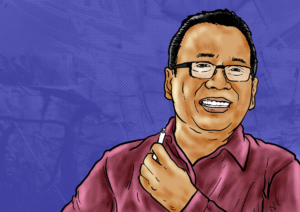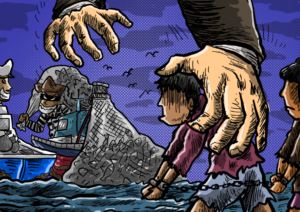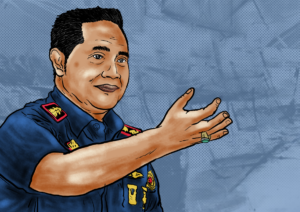Indonesia will hold the Presidential Election and Regional Head Election in February 2024. One of the things that the General Election Commission (KPU) pays attention to in welcoming this 5-year event is the spread of hoaxes or fake news. In the 2019 presidential election, KPU received many complaints from pairs of presidential and vice presidential candidates regarding false news.
To prevent similar incidents, the commission stated that it was preparing regulations and building collaboration with the Alliance of Independent Journalists (AJI), the Anti-Defamation Society (Mafindo), the Indonesian Cyber Media Association (AMSI), law enforcement officials, and the Press Council. However, according to Ika Idris, Associate Professor at Monash University, it was not enough. KPU must involve technology companies to play an active role in preventing fake news.
Learning from the rise of fake news in Malaysia and Indonesia, she encourages social media platforms to be more transparent, and takes persuasive steps to strengthen their efforts in preventing hoaxes. “This has turned into propaganda to influence opinions and voters,” she told Jaring.id on Friday, February 18, 2022. Below are the excerpts of an interview with Ika Idris about how to tackle rampant hoaxes related to the 2024 election.
Ahead of the 2024 election, the results of your research can be a lesson. Can you explain the background?
At that time, Malaysia held an election, in May 2018 to be precise. Meanwhile in Indonesia, the election was held in April 2019. At first, me and my research collaborator from Malaysia saw that the two countries had cyber truth. We were not familiar with it at first. We tried to see that there are similarities between Indonesia and Malaysia. We learned to see the pattern and then took the case in Malaysia and Indonesia. We took two hashtags.
How long was it? Since the debate took place several times, we focused on the last three months: February, March and April. The aim of this research is to show a map of the sentiment network of the two camps of presidential candidates on social media.
What was the hashtag?
In Malaysia, we took the hashtags #PakatanHarapan–it is a political party, and #MalaysiaBaru as the slogan it carries. While in Indonesia, we took the hashtag #Debatpintarjokowi and #Prabowomenangdebat. These hashtags were chosen because the debate was one of the defining events during the campaign.
What are your findings?
We use two methods. The first one is Social Network Analysis (SNA) to see the conversations that occur on social media. The second one is that we conducted in-depth interviews. In doing the SNA approach, we found several strategies.
First, they amplified the message made by each side. This is used by creating fake accounts and real accounts, both have a role in disseminating fake news information. Their work pattern turns out to be using a fact scheme that is partly fabricated. For example, there are statements from each of the presidential candidates and supporters, and then the statements are twisted, so that it seems to fit the framing of the candidate pairs.
Second, there is a strategy to find famous accounts to reach. This pattern is done to expand the reach of the message that they want to convey. The purpose of all that is nothing but trying to provoke public emotion from the content they produced.
Interestingly, in Malaysia, it turns out that their team network works like a virus. They spread out and attack in all directions. In Malaysia, all the works were really well coordinated. All were attacked by the group and were centralized. They not only spread but actively attacked. While in Indonesia, they are really amplifying. This is what happened in the 2019 election, they competed to be viral.
However, when searching for these accounts, it turns out that many have been suspended. Twitter stops suspicious activities. But the activities were still detected, so we could find out what the distribution pattern looks like.
Why did you use in-depth interviews? To strengthen the findings?
We did the interview for the cyber truth teams in Malaysia and Indonesia. During the interview, they conveyed strategies to play with human emotions and provoke sentiments. Their strategy is to make people get emotional. To agree or disagree, that is their main strategy.
In Malaysia, even the team has made a list of issues that are sure to provoke sentiment in the country. They even conducted research beforehand to find out what issues were sensitive in Malaysia. One of them is the issue of China’s leadership. Not only that, we also found that they were paid. However, there are also some others who work voluntarily. They even proved to us that there was an amount of 10 thousand Ringgit, which is equivalent to Rp. 34,293,630 per month, and they were on a one year contract.
What content do they produce?
From Indonesia, we took the two hashtags. That is to raise the opinion that the candidate is a champion in politics. They played Jokowi and Prabowo by showing the celebrations and claims of each side only. Meanwhile in Malaysia, since they searched for a slogan, many identities are being attacked. We can say that in Malaysia, the issue that is mostly played is identity.
How about the product of fake news in two countries?
We saw various types of fake news. There is fabrication and there is also plagiarism. For the type of fabrication, they seriously produce fake news content. Meanwhile, the type of plagiarism cites statements from each side, but the content was slightly modified, so they don’t take the quotes completely. The second one is deploying cyber truth. So we can say that this has turned into propaganda in order to influence opinion and voters. We conclude that both the cyber army and cyber truth during the election are digital propaganda strategies.
So it is deliberately done to produce a hoax?
Yes, for sure. You can see from the pattern. The pattern is organized. In Malaysia, it is quite organized. While in Indonesia, the pattern is ‘organized amplification’. There are many field coordinators, meaning that there are a lot of networks of leaders, but it narrows down to one account or several specific accounts, which indicates where the message came from. The main purpose of all is to dominate opinion.
In Indonesia, why are election organizers often becoming the target?
There are two uses of social media buzzers, which is for propaganda and for delegitimization of others. When the election organizers are attacked, there is a framing that they failed to work properly. And when the buzzers have orchestrated everything, the issue can gradually become news in mass media.
Do you think similar conditions will occur ahead of the 2024 General Election? What to do?
The platform or technology company should be regulated. Twitter has started to set up the rules. There are still many other technology companies that are also being used during the election. Their platform is used to advertise with targeted advertising schemes. This can be done on Facebook and Instagram. So the target audience is who will get the political advertisements. This needs to be anticipated by the platform. Next, the government needs to make a policy. I see that the government still tends to use the method of closing and blocking the site. That’s not enough, because there are still many hoax spreaders, but they are not blocked.
In addition, it is also important to have fact checkers who are members of Fact Checks. This means that the more fact-checking teams at national and local levels the better. Of course, fact-checkers or fact-checking associations need policy. This is because many fact-checkers have close ties to the government. So, this needs to be anticipated for the 2024 election later. Lastly, the KPU must have the courage to impose sanctions on anyone who uses cyber truth to spread fake news.(*)







